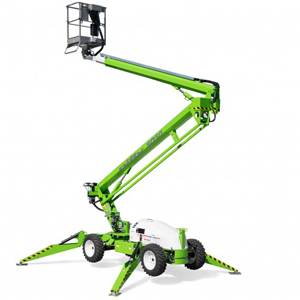An aerial lift can have a significant impact on your company’s daily operations. Almost any work environment can be accommodated by a variety of models with a variety of lift heights. It is important to consider indoor versus outdoor applications, vertical and horizontal reach of the platform, and lifting capacity when choosing an aerial lift.
Aerial lifts are made for the purpose of lifting workers, tools and light materials, aerial lifts can move easily on the work site and provide safer access in hard to reach areas. As a result of their design, these lifts provide operators with mobility and flexibility, which increases their efficiency. To make working at high elevations safer, it also replaces traditional ladders, man-baskets on lift trucks and scaffolds. Aerial lifts are used in many industries, including manufacturing plants, maintenance providers, real estate management companies, warehouses, and construction. Besides general construction, aerial lifts can also be used for routine building maintenance, painting, trimming trees, and installing rooftop HVAC systems.
Modern aerial lifts offer safety features that greatly surpass traditional equipment in terms of stability, purpose-designed controls, and emergency backup systems. Worker safety is enhanced by slip-resistant surfaces and high guardrails. A full-body harness and lanyard complete the fall restraint system on boom-supported lifts. An operator must, however, inspect the vehicle before starting, including the lift structure, hydraulic/electric components, controls, limits, emergency systems and inspect the work site for hazards, even with the existing safety features. Furthermore, training for the operator will ensure that the correct steps are taken to prevent injuries.










